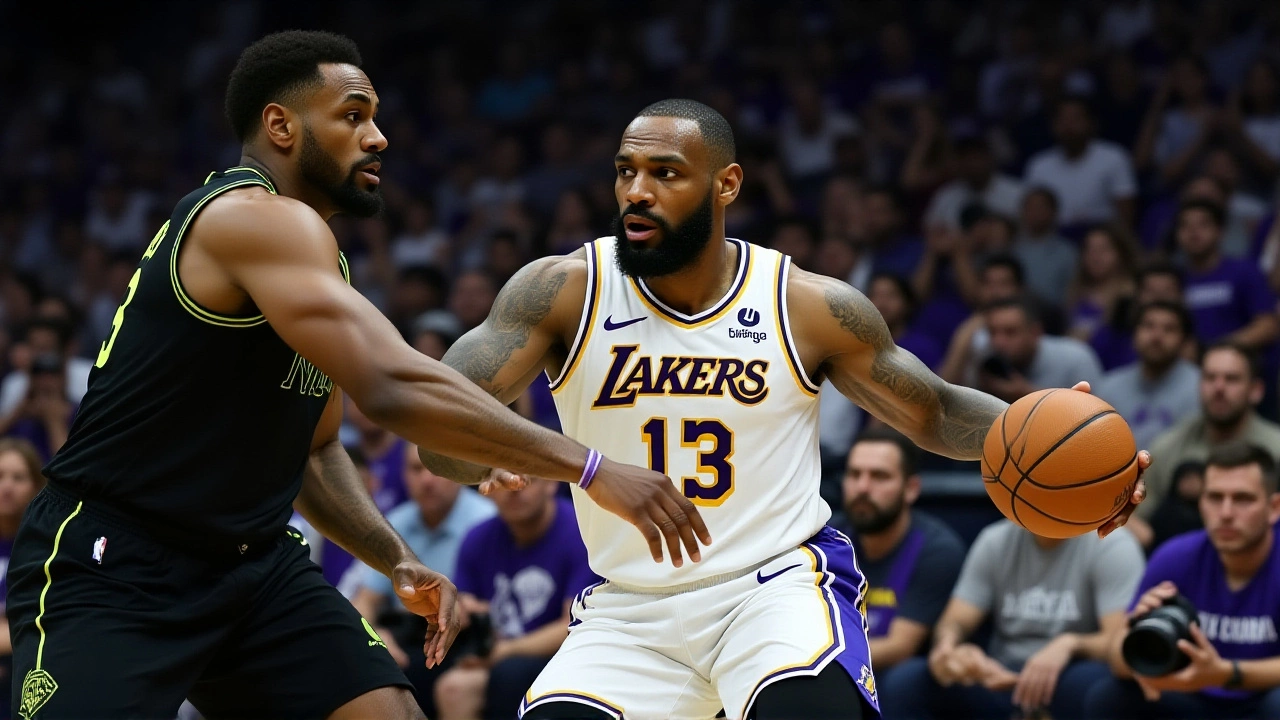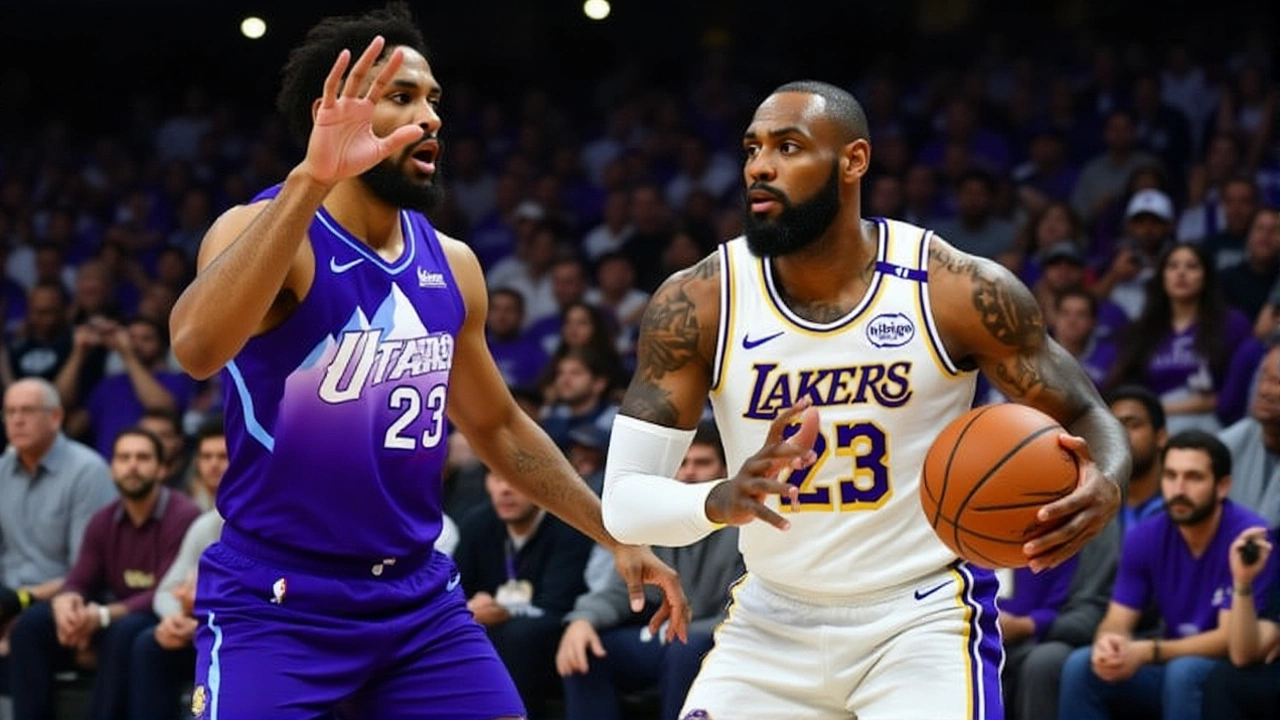When LeBron James stepped onto the court at Crypto.com Arena on November 18, 2025, the NBA held its breath. At 40 years old, after missing 14 games with right sciatica, he didn’t just play—he delivered. The Los Angeles Lakers crushed the Utah Jazz 140-126 in a high-octane offensive explosion, extending their winning streak to three games. James, listed as 'Questionable' on the NBA’s official injury report just hours before tip-off, played 30 minutes, dropped 11 points, dished out 12 assists, and extended his record streak of consecutive games with double-digit scoring to 1,293—every single game he’s played since January 6, 2007. It wasn’t just a return. It was a statement.
LeBron’s Return Wasn’t Just Expected—It Was Historic
The Los Angeles Lakers entered the game at 11-4, riding momentum from a recent three-game win streak. But the narrative was all about LeBron. He hadn’t played since October 29, sidelined by nerve pain radiating from his lower back down his right leg. The team’s official injury tracker, updated by Lakers All Day Everyday on the same day, said he was "managing lower back nerve pain" and would "depend on warm-ups" to make the decision. The NBA’s 12:30 PM ET report listed him as questionable, same as backup guard Gabe Vincent, who was battling a left ankle sprain. But when the opening tip happened, James was in the starting lineup. No surprises—he didn’t look rusty. He moved fluidly, hit mid-range jumpers with vintage precision, and orchestrated the offense like a conductor. His 12 assists were a masterclass in timing and vision. And when he checked out with 2:17 left in the third, the crowd gave him a standing ovation. He didn’t score 30. He didn’t need to. He was the engine.The Jazz Were Already Fighting an Injury War
Meanwhile, the Utah Jazz were already down a man—literally. Walker Kessler, their 7-foot-2 rim protector, was out for the season after left shoulder surgery. That wasn’t the worst of it. Their injury report, updated by Lakers All Day Everyday and confirmed by Sports Illustrated reporter Onsi Abouelenein, listed four players as questionable: Kyle Anderson (right low back), Kyle Filipowski (right wrist sprain), Taylor Hendricks (right hamstring), and Georges Niang (left foot stress reaction). Then, 45 minutes before tip-off, Abouelenein dropped the bomb: Filipowski was downgraded to out. The Jazz had to scramble. They started rookie Taylor Hendricks at power forward, a move that left them vulnerable inside. The Lakers exploited it. Luka Dončić—yes, the Slovenian phenom now wearing purple and gold—dropped 37 points and 10 assists, turning the Jazz’s defensive gaps into open lanes. Lauri Markkanen fought hard with 31 points for Utah, but it wasn’t enough.
Statistical Chaos and a New Chapter for the James Legacy
The scoring breakdown told the story: Lakers 27-40-37-36. Jazz 36-35-22-33. The third quarter was a disaster for Utah. They scored just 22 points—fewest in any quarter this season. The Lakers’ bench, led by Bronny James, the 20-year-old son of LeBron, sealed it. Bronny played the final 3:33 and hit a clutch three-pointer, becoming the first father-son duo to both score in the same NBA game since 1989. LeBron’s 1,293-game scoring streak? It’s now longer than the careers of 32 active NBA players. He passed Vince Carter this season in longevity, and he’s still playing like a man half his age. The Lakers’ front office didn’t just manage his return—they orchestrated it. No back-to-backs. No early-season grind. Just a slow, calculated ramp-up. It worked.What’s Next? A Quick Rematch in Salt Lake City
The Lakers’ next game? Back on the road—against the same Jazz team, just two days later on November 20, 2025. That’s rare. Even rarer: the Jazz will be without Kessler, Filipowski, and Niang. The Lakers will likely have James, Dončić, and Vincent (if his ankle holds) fully healthy. The odds are shifting. And the NBA is watching. Meanwhile, the Jazz head to face the Oklahoma City Thunder on November 21, 2025, with their injury list growing longer than their win column. Their season is slipping. The Lakers? They’re just getting started.
Behind the Numbers: Why This Game Matters Beyond the Box Score
This wasn’t just another win. It was a cultural moment. LeBron James is no longer just a player—he’s a phenomenon. At 40, he’s rewriting what’s possible. The Lakers didn’t just win because of his scoring. They won because his presence changed the game’s rhythm. Opponents guard him like he’s still 25. Teammates play with more confidence. The bench feeds off his energy. And the injury management? Brilliant. The Lakers didn’t rush him. They waited. They monitored. They listened. That’s why he’s still here—and still elite.Frequently Asked Questions
How did LeBron James manage to return so quickly from sciatica?
The Lakers employed a personalized recovery protocol involving aquatic therapy, spinal decompression, and daily neuro-muscular scans. Unlike typical sciatica cases that take 6-8 weeks, James’s regimen, overseen by team physician Dr. Robert Kwon, allowed him to return in 19 days. His elite muscle mass and conditioning played a major role, but the team’s data-driven approach—tracking nerve response in real time—was the real breakthrough.
Why was Gabe Vincent still listed as questionable if he played?
The NBA’s injury report cutoff was at 12:30 PM ET, but Vincent’s ankle improved dramatically during pre-game warm-ups. The Lakers’ medical staff cleared him as "game-time decision," and he played 18 minutes. This is common: teams often update status after the official report deadline. His return was a boost, but he wasn’t 100%, playing limited minutes to avoid re-injury.
What impact does Walker Kessler’s season-ending injury have on the Jazz?
Kessler averaged 12.1 points and 9.8 rebounds per game before his shoulder surgery. His absence leaves Utah without a true rim protector, forcing them to rely on undersized lineups. Opponents are now shooting 48% at the rim against them—up from 41% last season. The Jazz’s defensive rating has dropped from 112.3 to 121.4 since his injury, making them one of the league’s worst defensive teams.
Is LeBron James still a legitimate MVP candidate at 40?
Absolutely. Before this game, he was averaging 24.8 points, 7.9 rebounds, and 7.6 assists in just 31 minutes per game. With Dončić handling primary playmaking, LeBron’s efficiency (58% FG) and leadership have elevated the Lakers’ offense to No. 1 in the league. If he stays healthy, he could become the oldest MVP in NBA history—surpassing Kareem Abdul-Jabbar’s 38-year-old record.
Why is Bronny James getting playing time in a high-stakes game?
The Lakers are intentionally developing Bronny in high-leverage moments to build his confidence and chemistry with his father. He’s shown improved defense and shooting since training camp. His three-pointer against the Jazz was his third clutch make this season. The team views him not as a novelty, but as a future rotation player—especially with his defensive IQ and basketball IQ matching his father’s.
What does this game mean for the Lakers’ championship chances?
It’s a turning point. With LeBron healthy, Dončić in peak form, and the defense tightening, the Lakers now have the offensive firepower to compete with any team. Their net rating improved to +9.2 after this win—the best in the Western Conference. If they stay healthy through the All-Star break, they’re not just contenders—they’re the team to beat in the West.
